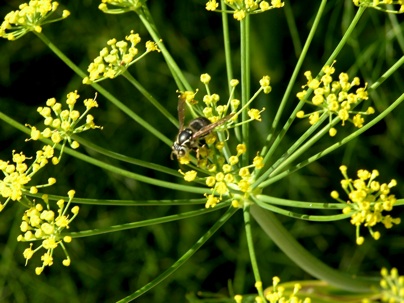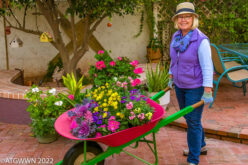“Stumbling on new smells is one of the delights of traveling.” – Diane Ackerman
In a small conservatory built of red brick with huge copper framed windows and an interior graced with a pair of white doves in an ornate wire cage, pots of fragrant white lilies perfumed the air. A woman walked in followed reluctantly by a tween age girl. “Ewww!” the child cried out, “what’s that smell?” Her mother, perhaps by now frustrated at her daughter’s lack of enthusiasm for this day in the garden, replied, “It’s fresh air.” The daughter’s reply, “Well, I don’t like it!”

The conversation between the mother and daughter left me wondering how our nose comes to know the scents of a garden? How do we learn a smell is sweet or stinky, pleasant or pungent? The fragrance industry has long worked to capture the “notes” of desirable scents in a bottle. Roses, jasmine, honeysuckle, gardenia, peach, pear and fresh cut grass are all ingredients in a variety of fragrances offered for us to apply to our person.
Yet the majority of the fragrance business is to eliminate and control odor in our homes. Air fresheners, candles, sheets of fragrant softeners to make our clothes mountain fresh are constantly improved to make our lives smell nice. In the retail business a signature scent is used to identify a store and the t-shirts it sells. First class airline cabins are infused with meadow scent to relax passengers along with their champagne. A North Carolina grocery store chain employed a scented billboard spraying the smell of charbroiled meat over the highway using a giant fan.
Our lives so saturated with manufactured scent have generated a demand for fragrance-free products. What are we left with when we try to make our lives fragrance free? What do we miss when we are afraid to sniff the air?

In Golden Gate Park, The Garden of Fragrance, is one of 17 themed gardens in the San Francisco Botanical Garden. There is so much to see in Golden Gate park, so many plants are visually exciting in colors and unusual in shape it is easy to take a look and keep moving on to see what on down the path. The Garden of Fragrance is designed to engage a visitor’s sense of smell and touch in this intensely planted space. Plants in raised beds are accessible for stroking and feeling the textures, releasing their scent. Exploring a garden through scent is quite an endeavor. One touch, one whiff layers on another and it is easy to be confused and quickly overwhelmed.
Yet how exciting to sniff our way through a fragrance garden finding the beds of lavender, the mint plants, a wide variety of sages, culinary herbs of fennel, cascading rosemary, curry and more. Leaves, soft, prickly, and velvety release their essential oils with a touch. Scented geraniums smell of ginger, lemon and rose. Scents are overpowering to some and undetectable to another. Scent is essential for pollination and therefore the survival of us all.

Our language fails us when we try to describe a plant’s scent to one who hasn’t smelled it. Usually we turn to metaphor describing the new scent to a more familiar one. This spring I discovered that Jerusalem sage smells sweetly of powdered sugar donuts.
Scent is closely tied with memory, (reminiscent, a scent reminds) a lavender connects us with a memory of our grandmother, lilac with a special spring; a ripe tomato broken from the stem brings back a magical picnic. The smell of ironwood after a desert rain, mint crushed in the glass w/ sugar, scent is a link to the past and into the moment at hand.
For 22 years, June 16th has been “World Smell Day,” (who knew?). Described as an “artistic & educational exercise,” the WSD mission is to introduce people all over the world to the joy of smelling. The idea is to “wake up our smell brains in order to live life a bit more vibrantly.” http://www.worldsmellday.com/ What better place than our gardens to celebrate the ability to enjoy a variety of natural smells.

Perhaps like the tween age girl in the conservatory our sense of smell has been neglected and protected from discovering the world around us. Many public gardens feature a sensory garden – an ideal location for nose training and memory making. Retailers have research proving when the store smells nice shoppers linger longer. As you travel, sniff out the scents of the new places you hope to discover and linger longer in a garden filled with fragrance.
Originally published in Roots & Shoots Master Gardener newsletter
@http://cals.arizona.edu/maricopa/garden/mgcentral/uploads/June11.pdf

